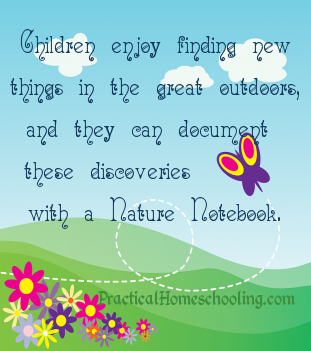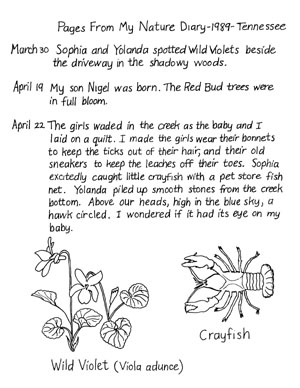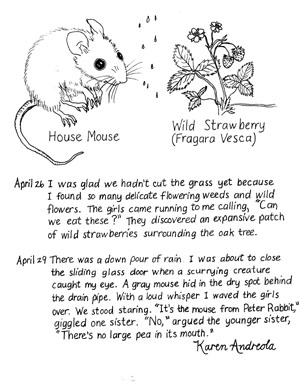 Charlotte Mason was born in the last century. Like so many successful and important women in Victorian society, her determination and single-mindedness were probably set in motion by failed family fortunes. She was left an orphan at 16, and made her lonely way in the world first through attending a teachers training college, then through a teaching post, to become a member of staff at Bishop Otter Training College, Chichester.
Charlotte Mason was born in the last century. Like so many successful and important women in Victorian society, her determination and single-mindedness were probably set in motion by failed family fortunes. She was left an orphan at 16, and made her lonely way in the world first through attending a teachers training college, then through a teaching post, to become a member of staff at Bishop Otter Training College, Chichester.
Charlotte was quick to recognize the injustice of denying home-educated middle class girls an academic education and determined to fight for a liberal education for all children from all classes of turn-of-the-century British society. Her views were expounded in lectures all over the country and in her book Home Education in 1886. The book attracted such support that more meetings followed.
In 1887 she founded The Parents Educational Union (PNEU) to teach parents how to teach their own children, which was backed up with a journal called The Parents' Review. In 1891 she set about finding a place where she could open her House of Education nick-named "The House of The Holy Spirit," to train young women not only to teach their own children in the future, but to become teachers and governesses of other people's children using her sound Christian philosophy of education and method.
In Charlotte's schools, much attention was given to instruction from the Bible. Even the youngest pupils, age six, were expected to recite beautifully and perfectly three poems, three hymns, a parable and psalm, and to "tell back" in their own words stories from the Bible and "living books" (whole books) in the curriculum. Six-year-olds also learned to add and subtract "little sums," sing one French song, and copy letters.
Students in Charlotte's schools were encouraged to use their hands and feet as well as their minds. Exercise drills were done outside on lawns. They learned basket making and pounded wet clay.
Every student was encouraged to keep a Nature Notebook or Nature Diary. Nature Notebooks were assiduously inscribed with fine prose and illustrated in delicate watercolors. This was a vivid part of their education. Following Charlotte's example I started a Nature Diary myself and have led my children into doing the same.
Keeping a Nature Notebook -- A Welcome Pastime
If we give our children regular opportunities to get in touch with God's creation, a habit is formed which will be a source of delight throughout their lives.
 Many people know little of the natural world because they never take time to observe it. Once our senses are on the alert, though, nature yields treasure after treasure. Children take especial joy in their little discoveries. "Mom, look, I picked some flowers for you!" What mother could resist a loving, generous nosegay of dandelions from her two-year-old? The dandelions are not new, but the children are, as they are seeing things for the first time.
Many people know little of the natural world because they never take time to observe it. Once our senses are on the alert, though, nature yields treasure after treasure. Children take especial joy in their little discoveries. "Mom, look, I picked some flowers for you!" What mother could resist a loving, generous nosegay of dandelions from her two-year-old? The dandelions are not new, but the children are, as they are seeing things for the first time.
A sneaky homeschool mom will take advantage of her children's "finds" by occasionally turning them into a lesson of sorts. To do this, you need a Nature Notebook. Any blank book will do for a Nature Notebook.
Working alongside your children and filling out your own Notebook will provide your children with an inspiring example. Allow them to tell about their "finds." Then see how well you, and they, can draw a picture that resembles the real thing. When the drawing is complete, encourage the children to record their descriptions or "tellings" on the opposite page of the Notebook.
During the busy drawing time, I usually keep a nature handbook and field guide open on my lap under the table. I glance down at information that I put into my own words, casually sharing with the children as if I am an uncommonly knowledgeable mother!
Setting aside regular school time for nature study is helpful. On these Nature Study days my children welcome what seems to be "free time" in between more bookish learning.
But special nature study lessons aren't always necessary. As you know, children will discover toads, butterflies, beetles, earthworms, robins, thistles, squirrels, mushrooms, berries, and run into thorn bushes on their own, without any prodding from us.
 In summer, the screen door bangs shut as they enter the kitchen with bright red scratches, bee stings, their clothes covered with grass stains and stick-tight seeds, to show you their treasures.
In summer, the screen door bangs shut as they enter the kitchen with bright red scratches, bee stings, their clothes covered with grass stains and stick-tight seeds, to show you their treasures.
I can remember, when we lived in the hot south, chasing a Blue-tailed Western Skink around our living room floor with a battered butterfly net. The children had such fun, laughing in the excitement, but I wasn't laughing. To my great relief, this foot-long lizard was finally contained in a mop bucket and drawn into our Nature Notebooks. It proved to be a colorful and impressive entry.
According to Charlotte Mason's recommendations, all illustrations should include captions: the Latin name of the specimen as well as its familiar name. A flower and bird list can be kept at the back of the Notebook as well as other lists which may interest the individual child -- fungi, insects, fossils, etc. These lists are best kept in neat columns, with the name and date of the find all on one line. It's a pity to limit Nature Notebooks to any one subject whether it be all flowers or all birds.
Keeping a Notebook should never be presented as if it were a classroom assignment. We are trying to help our children develop a spirit of joy and praise, admiring God's work in creation. Try to avoid criticism unless it is to give helpful suggestions. These Notebooks, in the words of 19th century naturalist Anna Botsford Comstock, "of whatever quality, are precious beyond price to their owners. And why not? For they represent what cannot be bought or sold--personal experience in the happy word of out-of-doors."
Poetry in Nature
The world is so full of a number of things,
I'm sure we should all be as happy as kings.
-- Robert Louis Stevenson.
Which brings me to the adorning of Nature Notebooks or Nature Diaries with suitable poetry chosen by the student. Poetry or quotations from literature, whether written separately on pages of the Notebook or inserted among the nature notes, are another way to share the beauty of nature. Nature in verse is not hard to find. Here, the student can "make friends" with poets who communicate an appreciation of the aesthetics of God's creation. For example, on the front page of my Notebook I've written the verses of one of my favorite hymns, "This Is My Father's World."
The natural world expresses God's personality in a way we all can comprehend in some measure. Following Charlotte Mason's advice, nature study should be approached with great reverence, for in dealing with birds, animals, and flowers and all other forms of created life, we are perhaps nearer to the Creator than in any other branch of science.
All the information your children are gathering in their nature study lessons, and the habits of observation they are acquiring, will form an excellent foundation for their future scientific education. In the meantime let your children consider the lilies of the field and the fowls of the air.